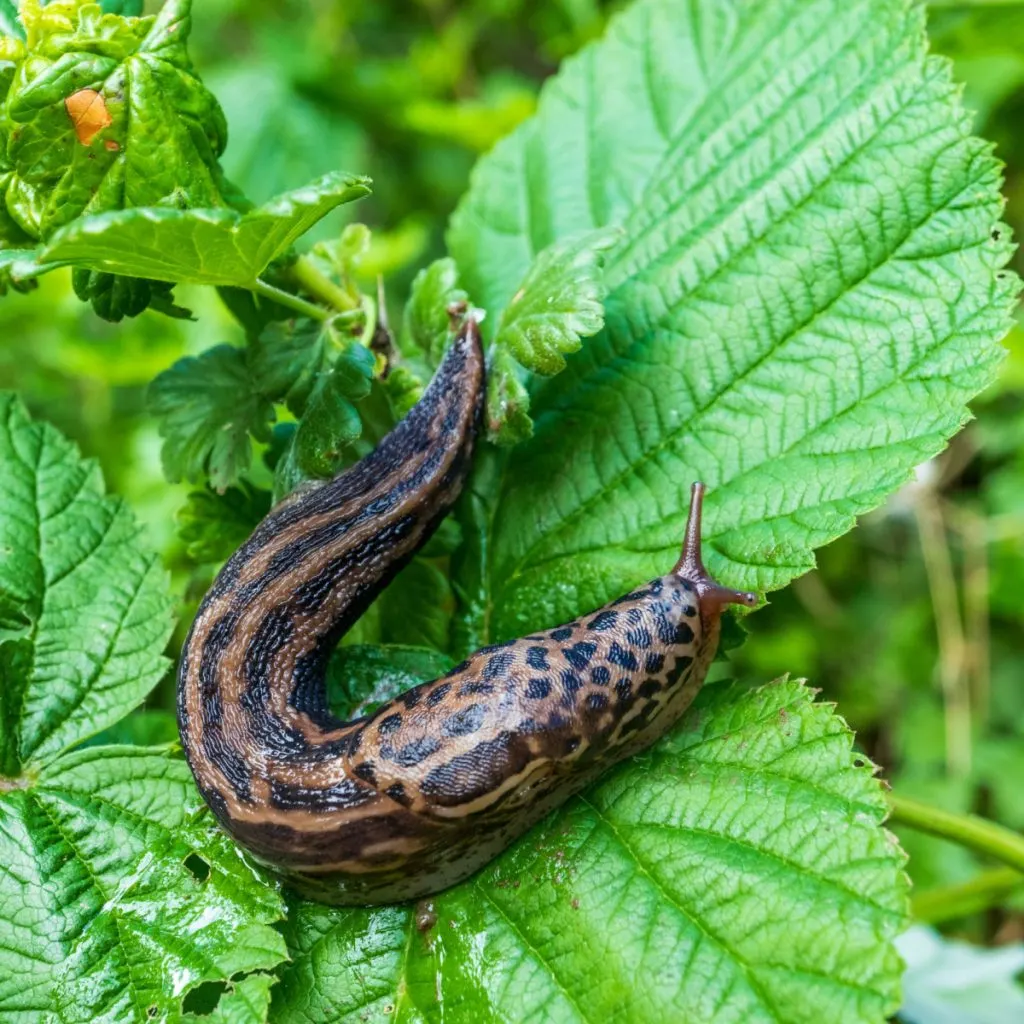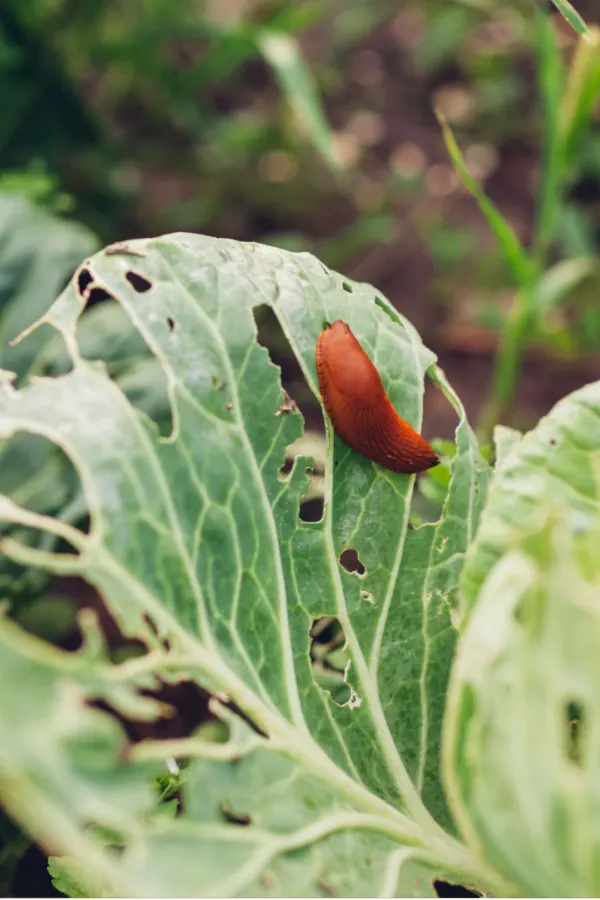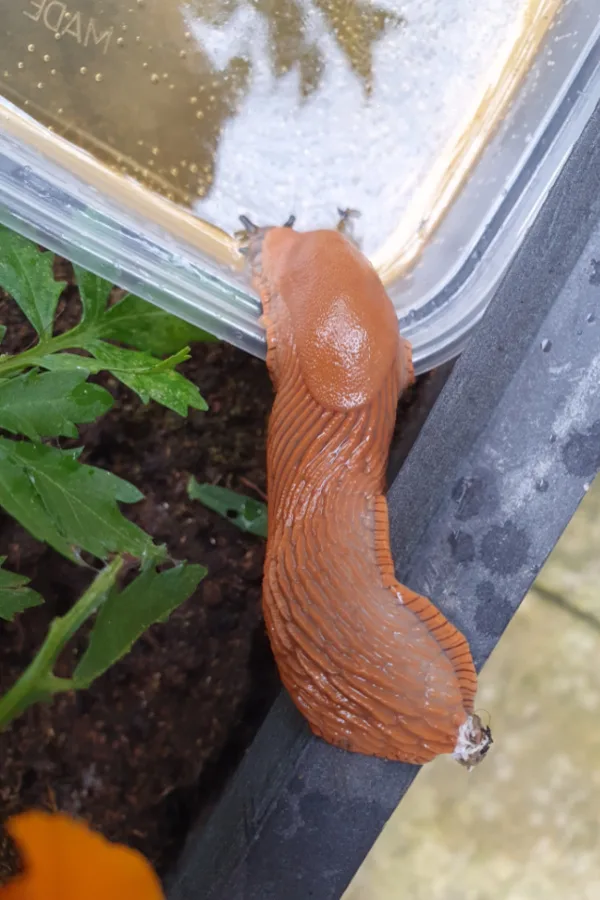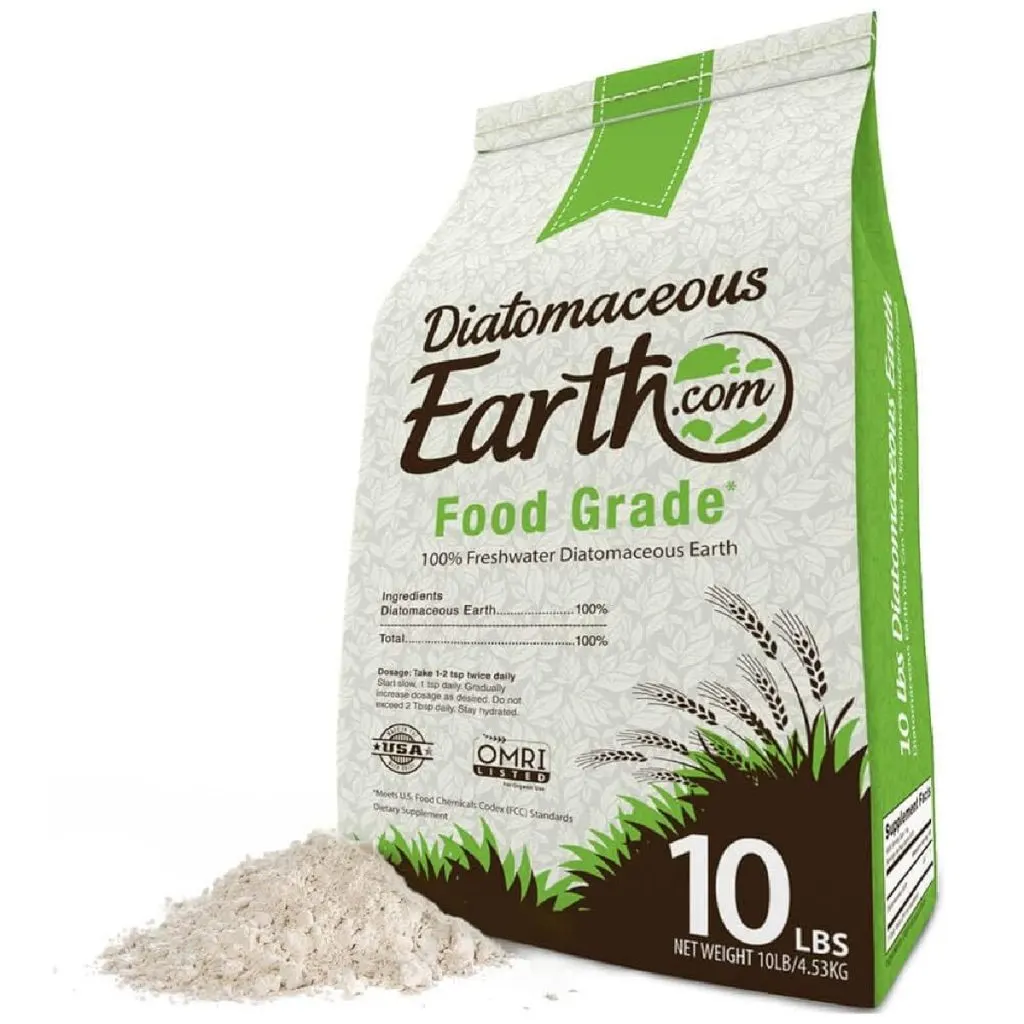Looking for a few quick and simple methods to stop slugs quickly – and get rid of them from your garden and flowerbeds for good?
Although slugs can be an issue at any point of the growing season, they are most active in early to late spring when the weather tends to be wetter and more cooler. And although their large slimy bodies might seem slow mowing and harmless, they can create a lot of damage to your flowers and vegetable plants – and in quick fashion!
Slugs have voracious appetites. They can all but devour small seedlings overnight. But they don’t stop there! They also have no problem chewing holes in the foliage of larger vegetable plants and flowers as well.

Beyond the destruction they cause with their appetites for foliage, slugs also carry a host of diseases that can be transferred from plant to plant, all but wiping them out in some cases.
Unfortunately, most gardens and flowerbed areas contain the perfect mix of food, moisture and shelter for slugs to gather, dine – and even worse, reproduce. But the good news? As long as you act fast when you first begin to see slug damage, you can get rid of them fast – and in the process, protect your plants with ease!
Finding Slug Damage – How To Stop Slugs Fast
The biggest sign that slugs are around are holes in your foliage and stems. They will tend to be odd-shaped and have ragged edges. Small seedlings can be completely consumed, almost as if they’ve vanished from thin air overnight.
Slugs are nocturnal, so all of their plant consumption and multiplying occurs during the nighttime. With the cover of darkness, they don’t have to worry about the harsh sunlight and heat drying out their slimy coating.
Most garden slugs are gray or brownish in color and only grow between 1 to 3 inches long. During the daytime, they are hard to locate because they hide in damp and dark places.

Early in the morning, you can often find their slime trails near the base of plants or on low-lying foliage. Lettuce and other leafy greens, cabbages, beans, and tomatoes are their favorite plant victims, but as mentioned earlier, slugs will consume almost any type of plant.
Once you notice the first signs of damage, it’s time to jump into action. So with protecting your plants from slugs in mind – here are four great ways to do just that – and keep your plants safe from damage!
How To Stop Slugs Fast – 4 Secrets To Get Rid Of Slugs
#1 Hand Picking – Stop Slugs Naturally
Surprisingly enough, one of the easiest ways to quickly get a handle on slug damage is with hand picking. While this method might take a little more manual labor, it’s by far the fastest, safest and most reliable method to eliminate slugs.
It is best to hand pick after dusk or early in the morning before the sun rises. Choose a night that is warm and on the damp side. These are when slugs will be most active. And although they are active, they are quite easy to catch!
Start with the area of your garden where you have seen slug damage and simply look for the slugs on plants. Pick them off and place them in a bucket of soapy water. If you happen to have chickens, you can also feed them to your flock.
When hand picking slugs, be diligent. You will need to do daily checks for a good seven to ten days, but you should quickly start to see a diminish in their population and damage.

#2 Diatomaceous Earth – How To Stop & Get Rid Of Slugs Fast
If hand picking isn’t an option, then your next best line of defense is to use Diatomaceous earth. Diatomaceous earth (known as DE) is a chalky substance that is 100% organic. It is actually the crushed remains of microscopic creatures from long ago.
The chalk-like substance has tiny, razor sharp edges that cut into the body of slugs. When the substance comes in contact with the slug, it slices the outer later of skin, drying out the slug and eliminating it in the process.
To use, simply sprinkle on the soil around plants or dust the foliage of plants. Once in place, any slug that tries to cross its path will quickly perish. To keep it effective you will need to reapply after watering or rainfall.
Always use a food safe version of DE. This is safe for all pets and humans and plants. Affiliate Product Link: Food Grade Diatomaceous Earth Food Grade 10 Lb
Diatomaceous earth is great for protecting perennial flowers that slugs love – especially hostas, which they can quickly decimate. See our article: How To Keep Insects Off Your Hostas This Year
#3 Organic Slug Insecticide – How To Stop Slugs Fast
While it might be tempting to reach for slug pellets sold in store, they can be quite dangerous for other animals. Not only do the pellets eliminate slugs, they will also poison any animal or bird that happens to eat the dead slug as well.
The good news is that there are organic products on the market that can effectively control slugs and are safe to use around plants. It is a great alternative to hand picking as well. Affiliate Link: Sluggo Wildlife and Pet Friendly Snail & Slug Control, OMRI Listed for Organic Gardening
#4 Beer Traps – How To Stop & Get Rid Of Slugs Fast
Beer traps have long been a simple but effective solution for slug control. Slugs love yeast and sugar – and therefore, they love beer! But to use beer traps effectively, there are a few things to keep in mind.
First, start by choosing a location that is on the outskirts or edge of your garden or raised beds. This will lure in slugs from the middle – and keep slugs from the outside going in. If you place your traps all the way in your garden, all you do is bring more slugs into the space.
Use a very shallow dish and then fill it with an inch or so of ale. The variety, style or brand do not make a difference, so buy the cheapest beer you can! Sink the container down into the soil, leaving a small lip around the container to discourage other insects from climbing in.

The slugs will travel to the beer solution and simply drown once they climb into the liquid. Be sure to remove all slugs and replace the container with fresh beer each night.
If you don’t want to use beer, you can also make your own sugary-yeast water. To make, simply use one cup of water, 1 teaspoon of sugar or honey, and a half to one teaspoon of yeast. Mix well and sit in a container just like you would for the beer trap. Be sure to check the trap often and change the solution nightly.
Here’s to stopping slugs – and keeping your plants safe!
Simple Garden Life
Follow Our Facebook Page For Even More Great Tips! Simple Garden Life Facebook Page
Simple Garden Life is a website dedicated to keeping gardening fun, simple and enjoyable! We publish two new articles each week along with a new garden podcast episode every two weeks. This article may contain affiliate links.

